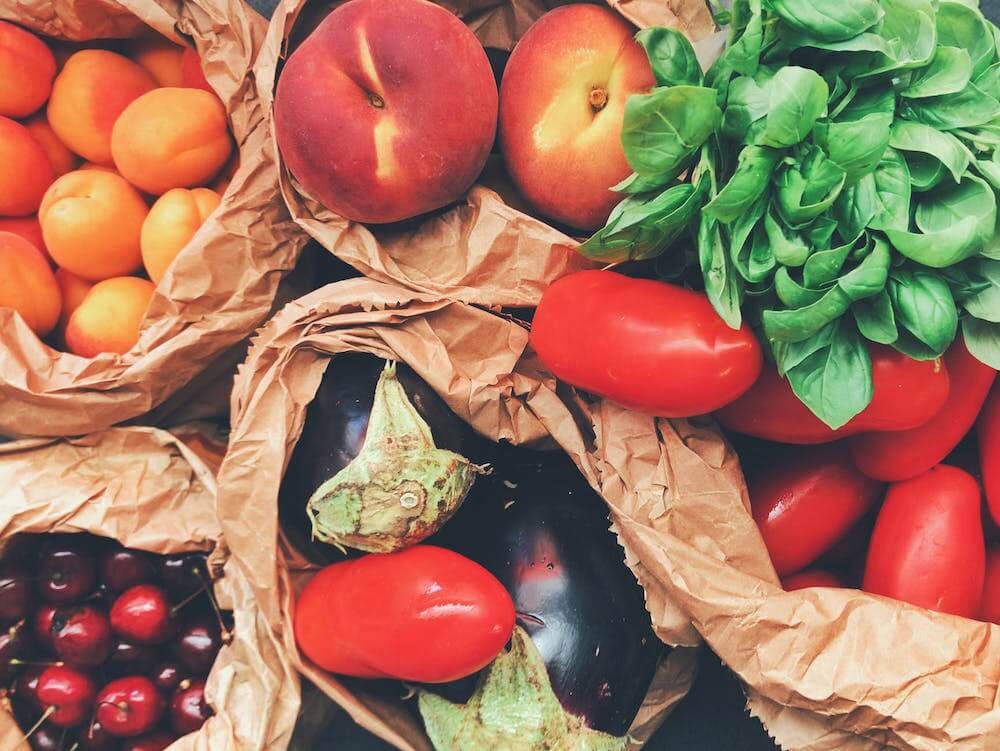A balanced diet promotes health and wellness in everyone, including people with cancer. By properly balancing your plate and adopting (or dropping) certain eating habits, you’ll be ensuring that your body is getting the nutrition that it needs to function well. An accurately balanced plate of food will consist of 50 percent fruits and vegetables, 25 percent lean proteins, and 25 percent whole grains.
Fruits and vegetables
Fruits and vegetables are an essential source of all the necessary vitamins, minerals, phytochemicals, and antioxidants that your body needs. The American Cancer Society recommends that you eat at least two and a half cups of fruits and vegetables every day to help maintain a healthy diet and reduce your cancer risk.
Uncertain on how to integrate that into your diet? It’s easy: embrace the rainbow. Fruits and vegetables with the most color—dark green, yellow, orange, red, blue/purple—typically have the most nutrients.

Lean proteins
Eating the recommended amount of protein everyday will help boost your energy and immune function. However, people tend to consume too much protein per day—oftentimes from meats that are high in saturated fats such as beef, processed meats, and lamb.
It’s recommended that you stick to protein sources like skinless chicken, fish, eggs, and plant-based proteins like beans. For those that eat red meat, you don’t have to swear off it forever: Just limit your intake to less than 18 oz per week and when you do consume red meat, make sure it’s lean (less than 15 percent fat and usually containing the words “loin” or “sirloin”). You can also try using healthier cooking methods like baking or grilling.
Ultimately, it’s all about portion control. For meats, that equates to three ounces; envision the size of a deck of cards. Other helpful tips on portion sizing can be found here.
Whole grains
If you haven’t jumped aboard the whole grain train yet, it’s time you should. These fiber-rich foods are so healthy that the American Heart Association recommends eating three or more servings of whole grains per day. But that doesn’t mean you need to eat endless amounts of brown rice and whole wheat bread. Here are some other options:
- Oats: Accessible and affordable, you can integrate whole grains into your breakfast with steel cut, old fashioned, or even instant oats.
- Quinoa: This South American grain is gaining popularity among the U.S. and is crunchy in texture.
- Corn: Even corn is a whole grain and there are endless amounts of forms to choose from (whole kernels, popcorn, cornmeal, corn tortillas).

Harvard University, TH CHAN School of Public Health, is offering an online course: “Evidence Based Nutrition.”
I just completed this class and learned a great deal which has modified my choices, affording my interior life a feeling of satisfaction: “I am better caring for myself and am a better influence on those around me now that I have taken this course.”
Good pay out wouldn’t you say?
thanks for this information
At age 75, I am being treated for clear cell renal. I still work part-time ‘cause i’m an old New Englander and work is
deep in my culture. Would someone knowledgeable about this diet stuff please send me a simple plain English daily diet? I can’t digest red meat and spicy stuff anymore. Limited raw veggies and dairy too . Thanks. PGJ